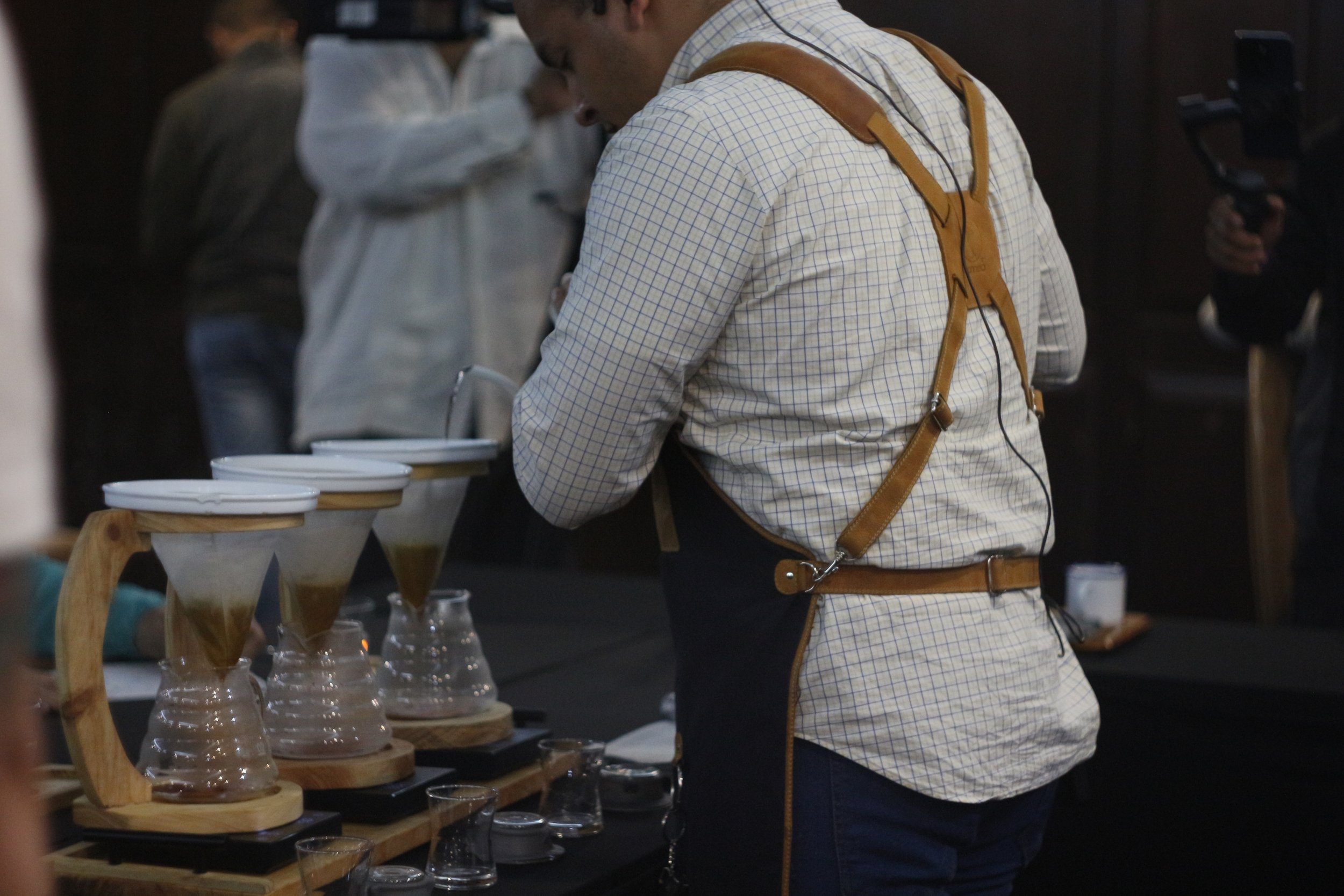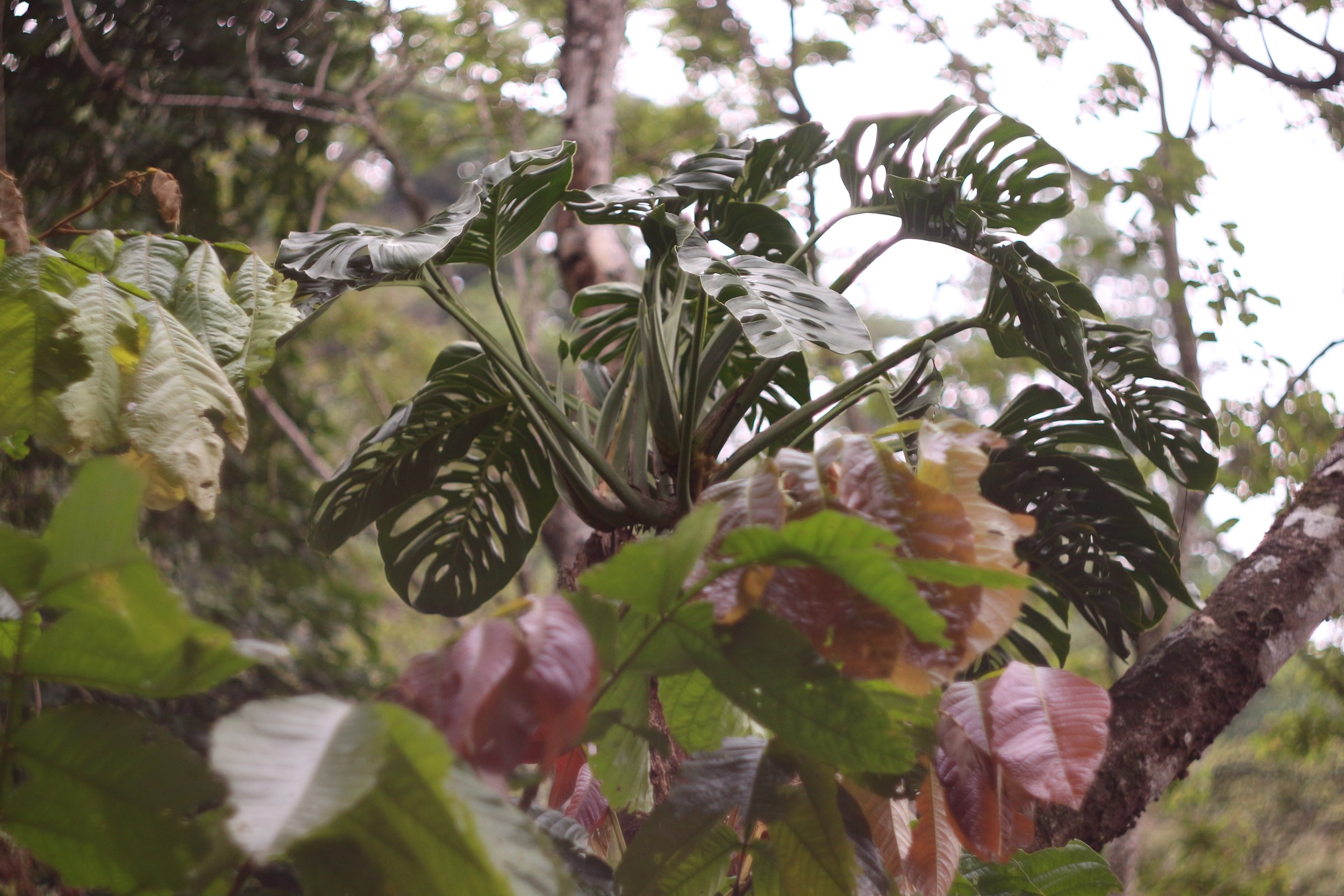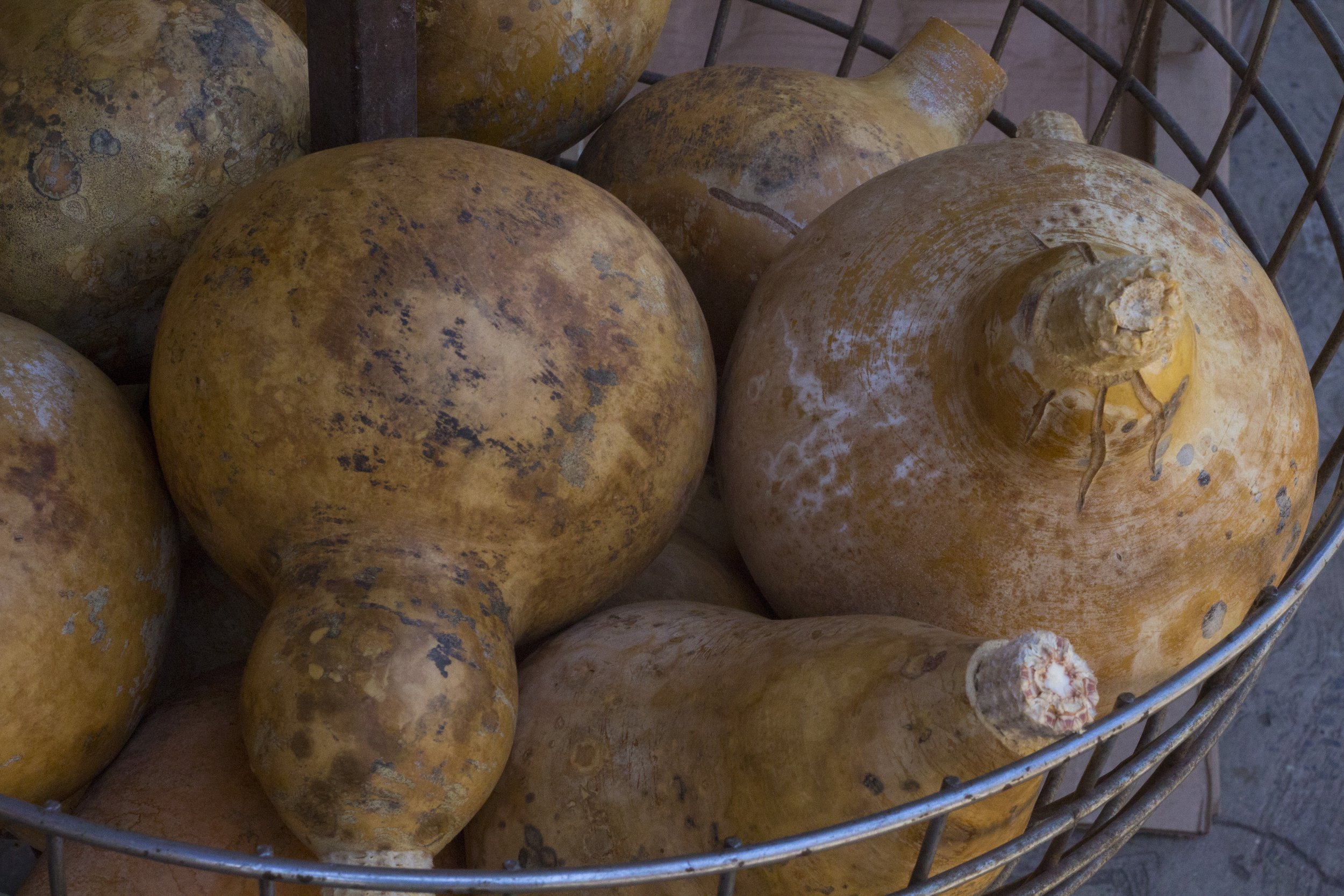
chapter 12
One treasure may hide another
Guayoyo, marroncito, con leche, conlechito, marron claro, marron oscuro, tetero, negrito largo, negrito corto; these are different ways of ordering coffee in Venezuela. El Guayoyo is a form of coffee preparation that has survived in homes despite the influence of the Italians. With the arrival of the espresso we know today, Venezuelans also succumbed to the americano, espresso elongated with water. But the real Guayoyo has always been prepared by infusing the coffee in hot water and then passing it through a fine cloth mesh better know as coffee sock. Café criollo. And it's drunk according to taste, stronger or weaker. It is even passed several times through the cloth mesh to extract more. Families still prepare it this way all over the country. That's why Francesco Guerrieri surprised everyone by coming third in the national brewing championship. Through his performance, from start to finish, he honored the culture of the country in which he was born, despite his Italian origins. And that's what we like... A little trick he applied to his coffee preparation is to place a paper filter in the mesh, adding his own touch and managing to find the right compromise between the preparation of popular coffee and the barista apprenticeships he has followed. In this way, he demonstrates his pride in being Venezuelan, and his determination to preserve this method, which is rarely used in coffee shops, but which is part of the heritage of popular culture.

Francesco gave us a great introduction to coffee from Juan Carlos Mujíca, a producer in the state of Lara. I'd got in touch with him via Instagram because I liked his project, and, let's face it, his photos of the coffee blossoms were very appealing. I heard from him very quickly, and we exchanged a few meaningful messages, sharing our visions, ambitions and all sorts of projections linked to Venezuelan coffee. From Toulouse, it was reassuring to have direct contact with a producer who was available and, above all, passionate about good coffee. Now facing Francesco, it was a crazy coincidence for Juan and me; we had to visit Juan Carlos on his farm.

Juan Carlos grows his coffee near Rio Claro, a commune close to Barquisimeto, Venezuela's fourth largest city. Barquisimeto, the regional capital of the state of Lara, lies at the foot of the Andes. In the beginning, or in the end, it's as you choose to see it. A lot of coffee is grown in this region. We're told there are over thirteen thousand coffee growers, making it perhaps the most productive region in the country. It's divided into several municipalities, and each one is very different in terms of climate, even within the same municipality. Some are very arid, with a desert landscape and very hot temperatures. Like in Carora, for example, the capital of the state's largest municipality, Torres. But there are other areas at higher altitudes where the vegetation is more abundant and the air fresher. This is a very agricultural state, where sugar cane, fruit trees, corn and even vines are grown! Several rivers cross the region: el Baragua, el Sanare, el Turbio, el Morere... It's in these tropical forests that the conditions for growing coffee are best found. El Tocuyo in the municipality of Moran. San Pedro or Jabon in the municipality of Torres. Sante Fe Coffee Estate is located south of Barquisimeto, in the municipality of Iribarren near Rio Claro.

On the phone, Juan Carlos told us that everything would depend on the weather. As we entered the rainy season, the sky could become overcast in no time and start raining very hard. But we really wanted to go, so we complied and hoped the weather would be on our side. The next morning, he was in front of the house on time. At the wheel was his friend, who also wanted to visit the farm, and Juan Carlos at his side. We got into the car, the model of which announced that we were going to climb mountains whose roads are not only winding but even stormy. On the way, Juan Carlos is very chatty, telling us that no one has been up to the farm yet. It's hard to get to, but I think it's also a place he loves all to himself. We felt privileged to be the first to visit his farm. Juan Carlos is quick to convey his passion for coffee and his dedication to quality. But what's most touching about him is the story and what the Santa Fe Coffee Estate project represents in his life. The farm was bought forty years ago by his parents, both agricultural engineers. Juan Carlos was very young, and the farm was the scene of many family moments, weekends and vacations. When his parents died, Juan Carlos inherited this family project. Returning to this farm is the only link he can maintain with those who are no longer here.

Juan and I were surprised to find ourselves in the middle of nature, in a dense forest on either side of the road, relatively close to the city. To reach the farm, we crossed a valley following the river. The view is magnificent, and we needed this first encounter with nature in our country. We get to know the family who work with Juan Carlos in production. Juan Carlos gave us bamboo sticks to help us on our way, and ordered us to start walking quickly if we wanted to see even a small part of the farm. We followed his advice, happy to have just arrived and already marvelling at the abundant natural surroundings.

This project represents this man's quest for meaning, as he finds himself with a precious treasure in his hands. This geographical area has always been conducive to coffee production. When his parents died, the transmission of knowledge was interrupted, and Juan Carlos has only his power of observation to capture all the secrets buried in his forty hectares of coffee trees and forests. A keen observer of birds, he proudly tells us that the natural park adjacent to the farm contains more species than the whole of Europe. The environmentally-friendly methods taught by Juan Carlos come as a surprise to the family working on the farm, who are used to conventional production systems. He tries to avoid the use of chemicals to prevent excessive damage to the soil. In his view, we need to focus on production systems that give ecosystems the tools they need to recover. We often read that agro-ecological systems or organic coffee growing are some of the most effective options. Thanks to them, coffee growers are coping with the climate crisis and its effects on coffee cultivation and production. On his farm, nature and man coexist in peace. The coffee tree is a species that grows wild in forests. So, a priori, this is the ecosystem best suited to the plant's needs. It's clear that Juan Carlos allows nature to express itself to some extent, creating a favorable ecosystem for coffee plants.

Suddenly, a few drops fall and Juan Carlos grabs the bamboo sticks we were each carrying and tells us to turn back quickly before the rain comes down harder. There's something very appreciative about being out in the rain among the coffee trees and lush nature. I would have liked to have stayed longer, to have savored the moment. The risk was too great; we had to get back on the road before it got too muddy. But I would have taken a few photos at least!

But the day with Juan Carlos didn't end there. We wanted to share a cup of coffee with him, of his coffee. His friend, who was with us, welcomed us into his home and we tasted several batches of his latest harvest. A privileged moment for Juan and me, as we sipped our coffee prepared by Juan Carlos while he described the treatment he had applied to each of these batches. The notes were very pleasant; walnut, chocolate and caramel gave way to fruitier tastes of apricot, candied cherry and grapefruit as the temperature dropped. We'd have to see each other again, on our eventual return. We didn't yet know what the next stage of our trip would be. But we wanted to go back to France with at least a small sample of his coffee, which we didn't get after that first meeting.



